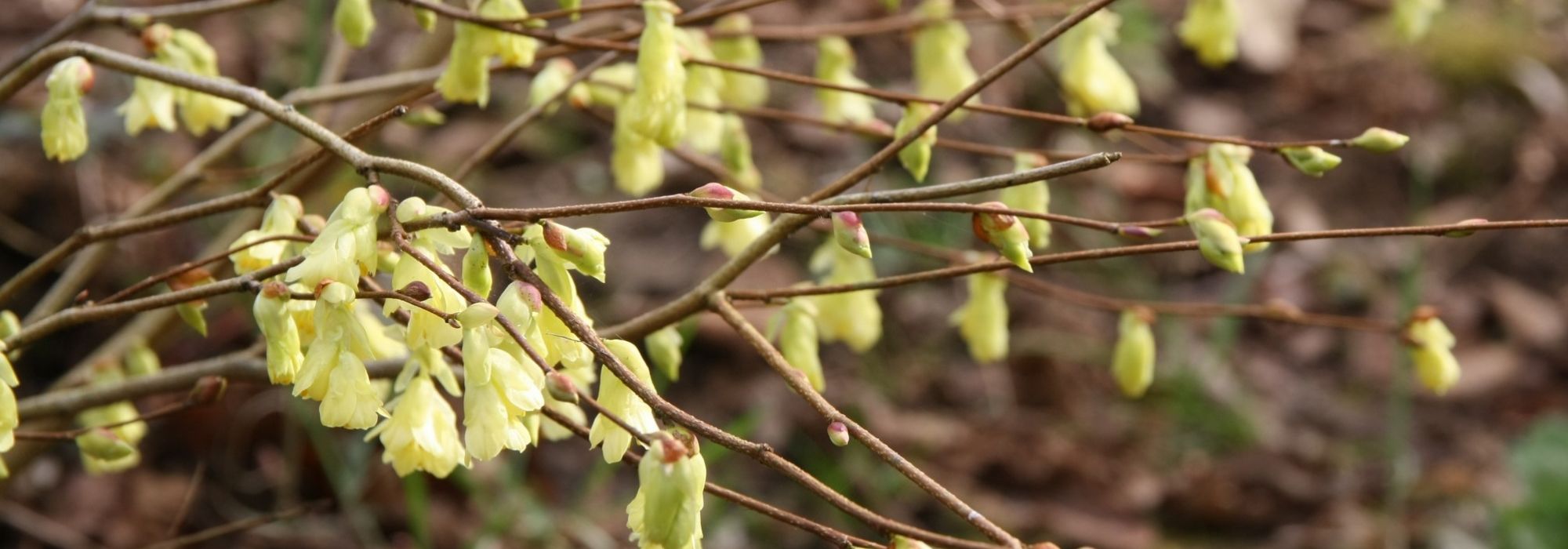
Corylopsis : planting, pruning and care
Contents
Corylopsis, in a nutshell
-
- Corylopsis, commonly known as winter hazels, are diffuse bushes that flower as early as the end of winter on naked branches.
- Some species emit a very strong fragrance, such as Corylopsis sinensis, while the primrose scent of C. spicata is more subtle.
- These original bushes thrive in dappled sunlight, in acidic, humus-bearing soils that are well-suited for heather soil shrubs.
A word from our expert
Corylopsis are uncommon bushes with a light and early fresh flowering that adds charm to the last hours of winter. They are nicknamed Japanese Hazels or winter hazels, although their fruits are neither edible nor resemble the shape of a hazelnut. However, their plicate foliage and the pendulous aspect of the inflorescences swaying in the wind evoke the Corylus (hazel) laden with aments at the end of winter. Corylopsis takes up much less space than a hazel and heralds the return of spring just as well, with the added bonus of a delightful primrose fragrance.
You will be charmed by its small sulphur-yellow lanterns that sometimes appear as early as the end of January. Then comes the spring green foliage that unfolds like multiple fans, with the veins remaining very pronounced, associated with slightly dentate and often ciliate edges. The autumn colours are just as pleasing as those of the Hamamelis, with some leaves unexpectedly turning red during the summer before being covered in gold before falling.

Flowers of False Hazels: Corylopsis pauciflora (photo Tanaka Juuyoh-Flickr), Corylopsis willmottiae ‘Spring Purple’ and Corylopsis spicata (photo Tanaka Juuyoh-Flickr)
Corylopsis spicata forms a relatively low spreading bush that makes an excellent specimen to isolate or place under the branches of a deciduous tree visible from the house to make the most of its early clusters. It can also be placed in the foreground of a large rhododendron or camellia to make its sulphur-yellow lanterns sparkle against a dark green background, or in a large container framed by early bulbous plants like daffodils or crocuses. Remember to provide it with dappled light in the heart of summer, such as the shade of a deciduous woodland, and a humus-bearing, cool, and fertile soil.
Description and botany
Botanical data
- Latin name Corylopsis
- Family Hamamelidaceae
- Common name False hazel, Japanese or Chinese hazel
- Flowering from January to April
- Height between 1.50 and 4 m
- Exposure partial shade
- Soil type light, acidic and fairly rich
- Hardiness Good (-17 °C to -20°C)
Rich in around thirty species, the genus Corylopsis includes hardy deciduous bushes, often endemic to Japan, also found in Korea and China, particularly in the Himalayan range. The scientific name Corylopsis is derived from the Greek korylos, which refers to the hazel, and the particle opsis, which signifies its resemblance to hazel leaves. However, it does not belong to the same family but to the Hamamelidaceae family, just like Loropetalum, Fothergilla, Parrotia of Persia, and of course, witch hazel. These plants often exhibit an early flowering that is delicate.
The highly branched bushes have a rather spreading habit with age, except for Corylopsis spicata, which maintains a more rounded stature, with heights generally ranging between 1.50 and 2.50 m, reaching 4 m in height for C. willmotiana with a spread of 2 to 4 m. The twisted branches with horizontal or oblique growth give character to this understorey shrub, which is illuminated by the brightness of its greens during leafing. The fine, shiny brown bark is punctuated with cream lenticels, similar to that of the hazel.
The simple and alternate foliage is ovate in shape and possesses 2 stipules (small leaf-like structures at the base of the petiole) characteristic of the Hamamelidaceae. The lamina features very pronounced parallel veins and a slightly dentate margin. During summer, some leaves turn red before the entire shrub dons a superb golden autumn cloak. Corylopsis sinensis var. sinensis ‘Spring Purple’ stands out with its stunning deep purple hues from spring until July, which turn to bronze green before igniting.
The flowering bursts forth in a multitude of pendulous clusters 5 to 7 cm long, consisting of 10 to 20 pale yellow bells that are often fragrant. The flowers, with five sulphur-yellow petals framed by 2 persistent butter-yellow bracts in spicata, present a bouquet of 5 red or yellow stamens that are more or less visible at the top of the corolla. The flowering may be damaged by late frosts, although the shrub itself is perfectly hardy beyond -17°C.
The fruits consist of greenish capsules, turning brown at maturity, releasing 2 seeds through four valves.
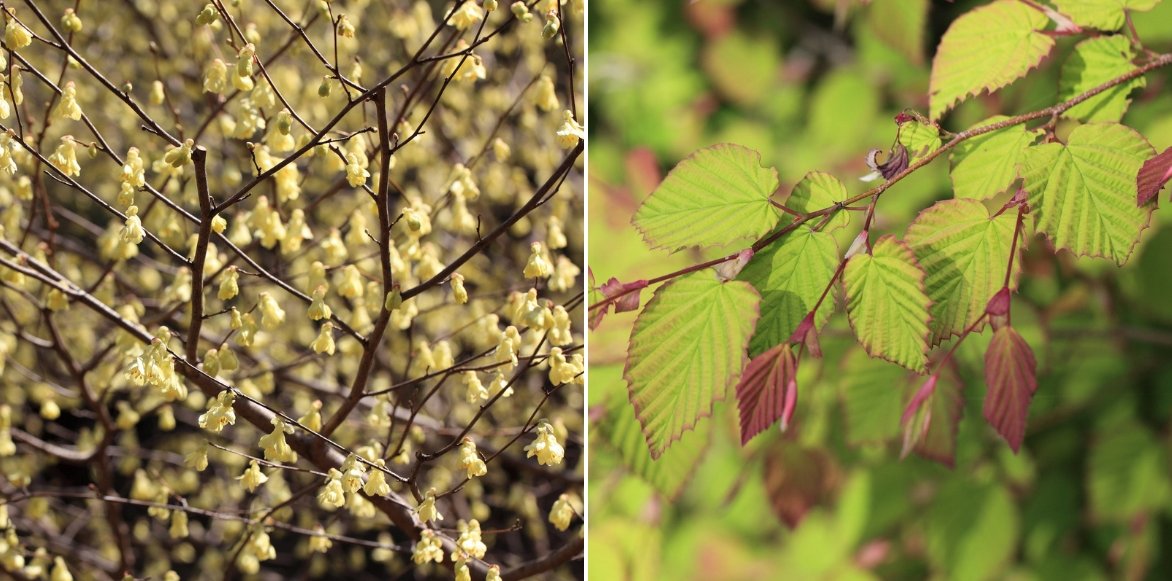
Corylopsis pauciflora: generous spring flowering with pale yellow bells / beautiful crinkled foliage (photos Tanaka Juuyoh – Flickr)
The main varieties of Corylopsis
The main varieties
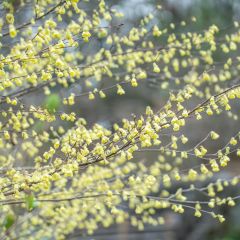
Corylopsis pauciflora
- Flowering time April, May
- Height at maturity 2 m
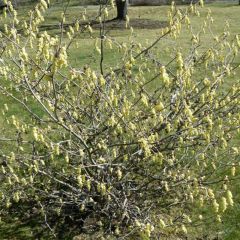
Corylopsis sinensis var. sinensis Spring Purple
- Flowering time April, May
- Height at maturity 4 m
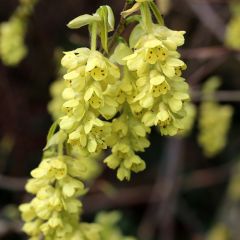
Corylopsis spicata
- Flowering time April, May
- Height at maturity 2 m
Planting
Where to plant Corylopsis?
Provide Corylopsis with a sheltered location from the wind and slightly shaded, which can be at the foot of a large deciduous tree, near a conifer that protects it from the hot afternoon rays, or in a bed of deciduous and evergreen bushes. Corylus spicata is particularly sensitive to fluctuations between frost and thaw, so avoid exposure to the east.
Just make sure to plant it in soil free of lime, sandy or humus-bearing but rich and well-drained like forest soil. Avoid using pure heather soil when planting in a container.
When to plant?
Plant it in autumn preferably or after flowering, ensuring proper watering during the following summer.
How to plant?
This bush is easy to grow in a relatively cool atmosphere.
- Soak the root ball in a bucket of water to thoroughly moisten it.
- Dig a hole wide enough for the roots to spread well.
- Add a few shovelfuls of turf, potting soil or compost and sand if the soil is sticky to ensure good drainage around the roots.
- Place the plant in the planting hole and backfill, forming a basin.
- Water generously and mulch.
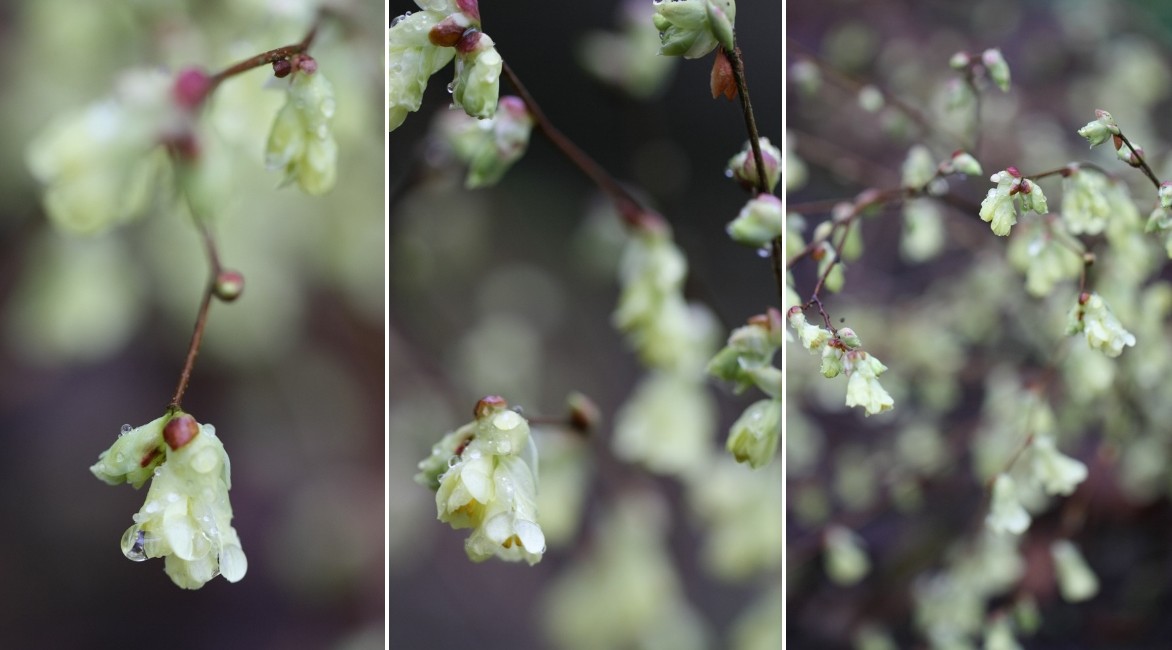
Corylopsis pauciflora (photo by Virginie Douce)
Care
Ensure cool conditions are maintained in summer. Protect the branches from late frosts with horticultural fleece if necessary. Growing in a pot allows you to bring it indoors during flowering. Don’t forget to put it back outside. Corylopsis is not susceptible to pests.
Pruning is unnecessary but can be done after flowering to remove faded flowers. The production of new floriferous shoots can be stimulated by cutting back old specimens to 30 cm above the soil. Flowering occurs on one-year-old wood.
Mulch in autumn with a good layer of fallen leaves. In containers, apply fertiliser for ericaceous plants after flowering.
Propagating
The simplest multiplication method involves layering a low branch by pegging it down in summer.
Layering
- Bury a section of the low branch, leaving the tip exposed.
- Gently scrape the bark of the buried part with a sharp blade and sprinkle with rooting hormone.
- Separate the layer from the mother plant after 1 or 2 years.
Uses and associations
The graphic silhouette associated with the elegance of the flowering of Corylopsis spicata has always fascinated bonsai enthusiasts. In the garden, Corylopsis spicata forms a spreading bush that is best planted away from other bushes to highlight its silhouette. It can also be placed in the foreground of a large rhododendron or camellia to make its sulphur-yellow lanterns sparkle against a dark green background before the flowering of the rhododendrons and azaleas takes over.
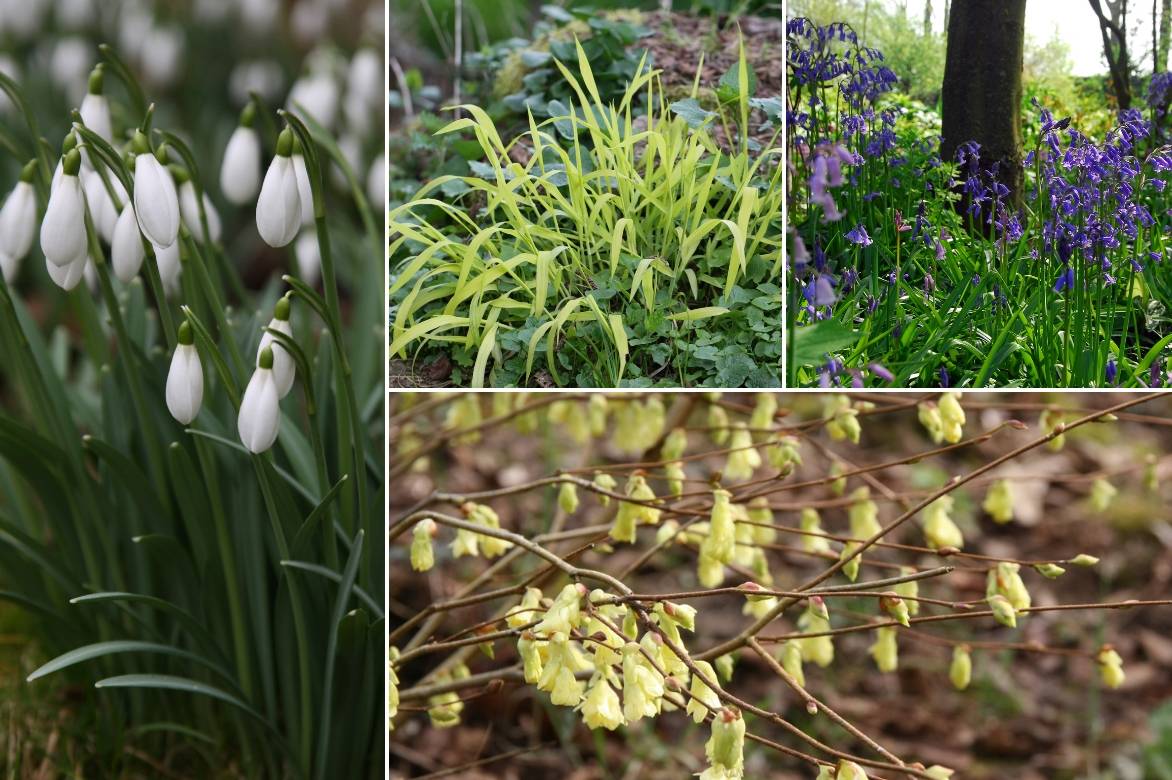
An idea for undergrowth association: Corylopsis pauciflora, Snowdrops, Milium effusum ‘Aureum’ and Scilla nutans
It also makes a stunning specimen framed by a carpet of early bulbs such as daffodils or crocuses or hellebores. Remember to provide it with dappled light in the height of summer, like the shade of a deciduous tree understorey alongside Hamamelis, Hydrangeas, and all other ericaceous plants.
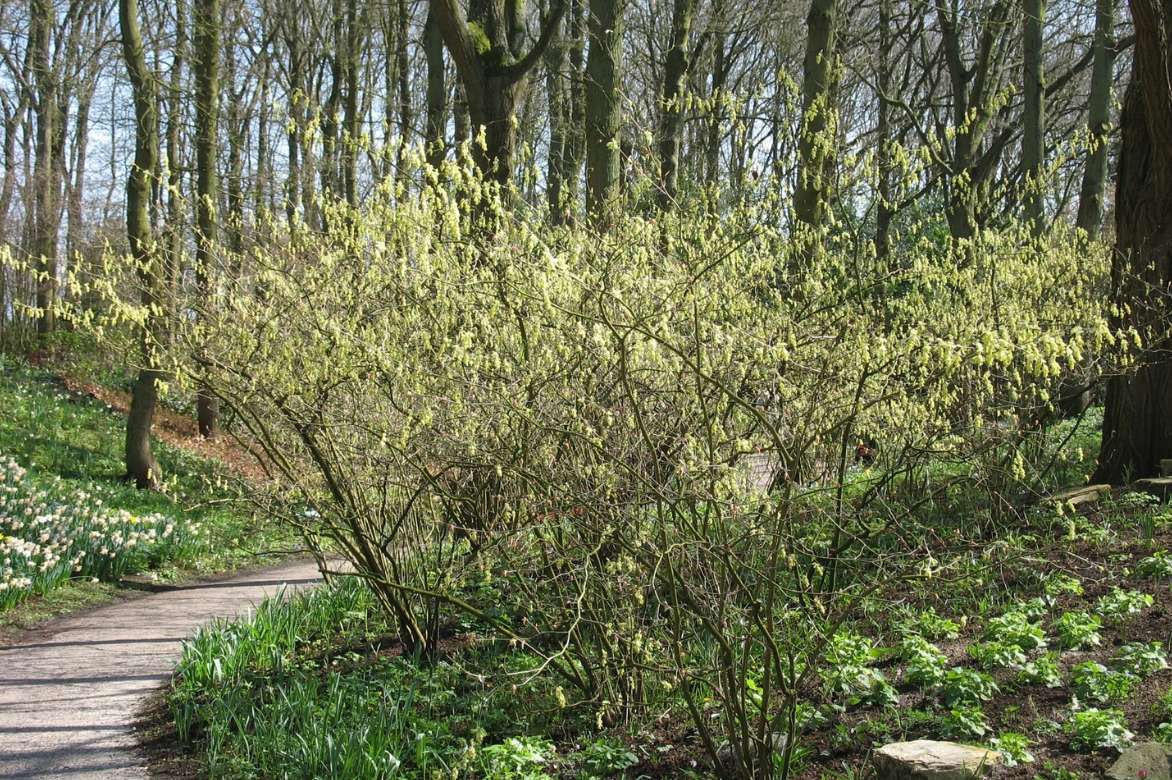
Corylopsis pauciflora in full spring bloom (photo Esther Westerveld-Flickr)
To go further
Discover our range of Corylopsis.
- Subscribe!
- Contents
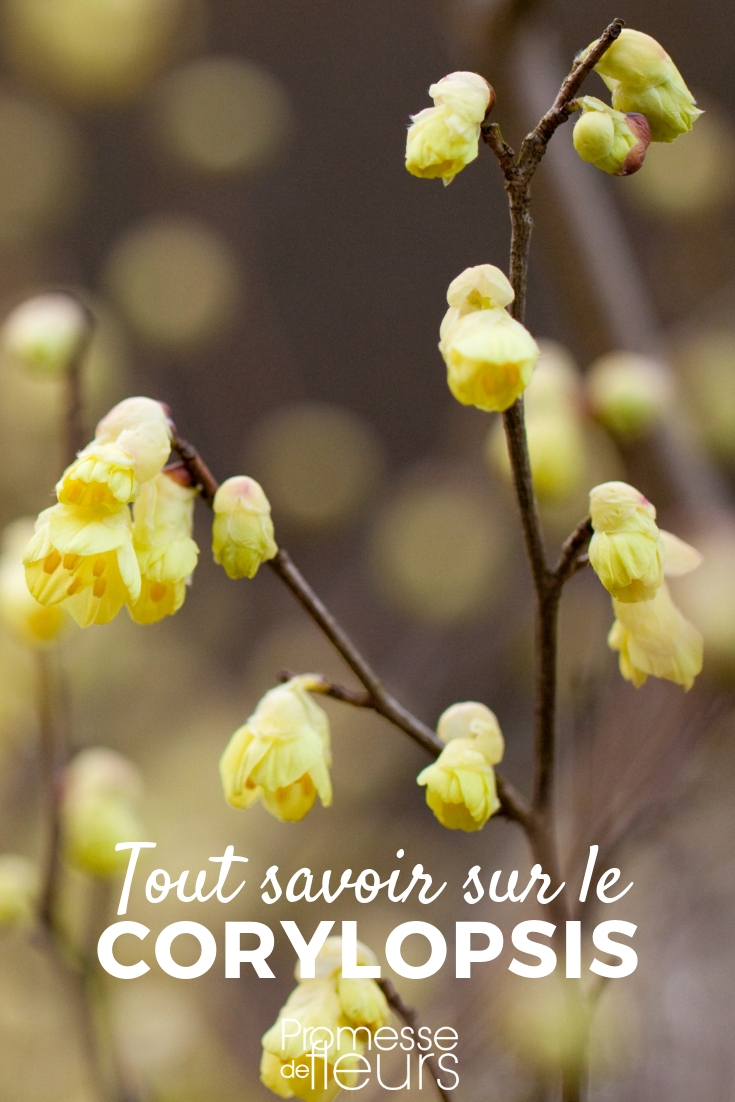































Comments